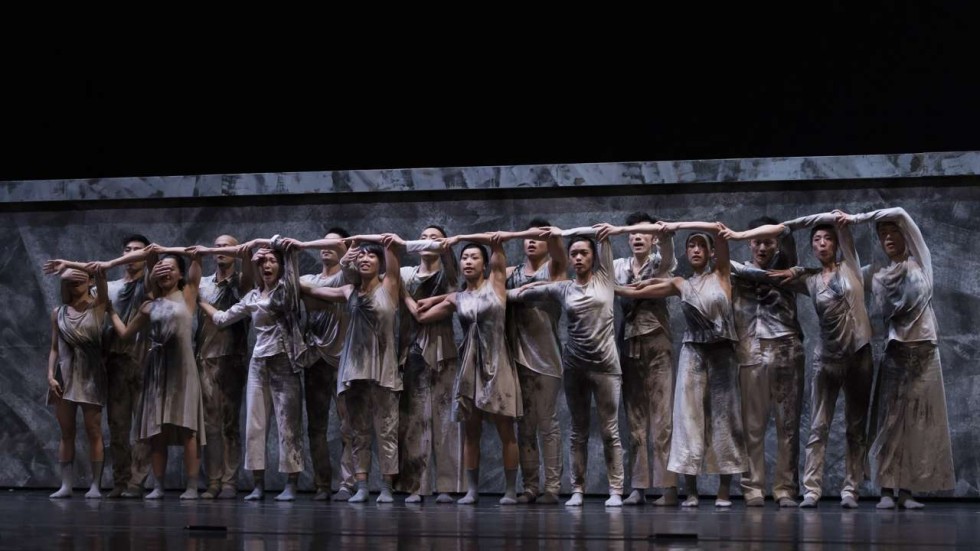
By: Keren Chaukria
Fragile Beauty tells the story of Hong Kong, taking you through the changes the city has seen over the years through modern dance. Indeed, from choreographer Sang Jijia’s perspective, the city has seen many changes over the thirteen years he has been gone and this 75 minute dance piece takes you through the personal and political journey the city and its people have experienced.
The moment the lights came up the dancers on stage instantly command the attention of the audience. The ensemble moved as one, showing an immense power, and strength, and as the story progressed, you could begin to see manipulation taking place within the city. This was represented through stylized, repetitive sequences that brought more of a political theme to the progression of Hong Kong. The movement of the dancers showed continuous strain, drawing attention to the multiple and varied political struggles that have taken place over the years.
Individual stories began to unfold, not just through dance, but through spoken word in both English and Cantonese, by some of the dancers. Stories were told sentence by sentence, first in Cantonese, then English. The triumvirate of dance, English, and Cantonese all happening simultaneously was quite powerful at times, however, there were moments when one or the other felt redundant, due to the size of the stage, and placement of the cast. At one point, there was a pair of dancers positioned upstage right who were verbally telling a story, and the accompanying dancers were as far away as possible, being positioned downstage left. Unfortunately, it was difficult to appreciate either piece in times like these.
That being said, there were moments where the combination of all three allowed the audience to have a clearer understanding of the situation, and the effects that change can have to not just society as a whole but the individual, and the hardship and struggles they may experience.
The performance utilised a number of different staging techniques. One of the most memorable being a section of silhouette dancers. Their stylized movement was sophistically staged and breathtaking from the moment they began. The fluidity of movement, and effortless choreography transported the audience with every move to moments they have experienced, and can relate to in Hong Kong life. It is without a doubt, that Sang Jijia captured the life, and soul of the city through its numerous changes.
Even if you’re not one for modern dance, the music, and lighting in the performance will blow you away, as it too emphasises the change, growth, and cultural identity of Hong Kong. The deep, turbulent drums expressed the anger and frustration many feel with change, as the warm, familiar, but sometimes dim lighting kept you company throughout.
Fragile Beauty is a must see for anyone who feels a connection with this city, or culture.
Fragile Beauty is playing at the Kwai Tsing Theatre through June 4th. For more information, click here.
via:http://www.hkeld.com/





